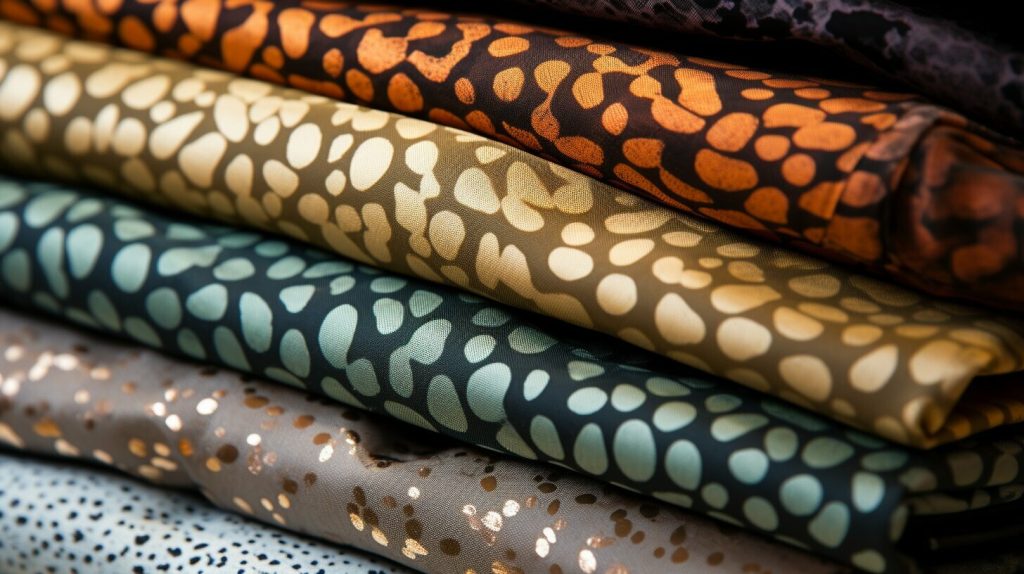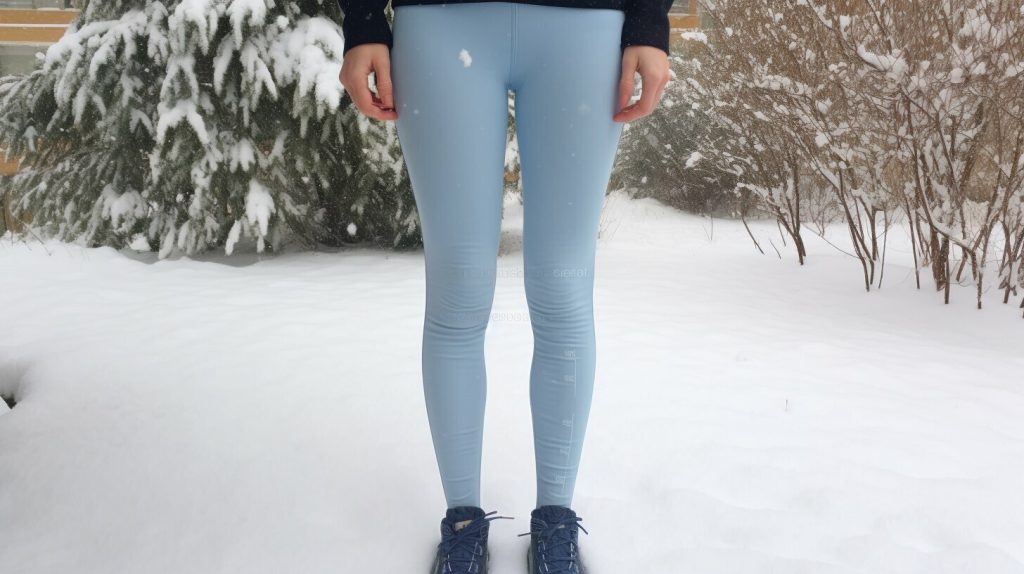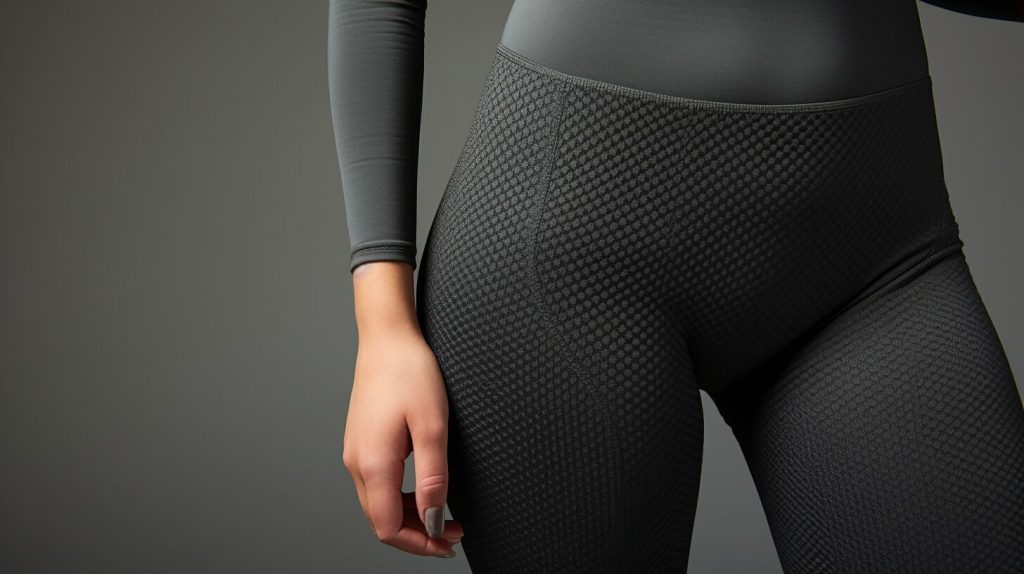
When it comes to staying warm during colder seasons, the debate between leggings and jeans is a hot topic. Many people wonder which option provides better heat retention and offers more warmth. In this article, we will delve into the facts and compare the heat retention of leggings and jeans, helping you make an informed decision about which one is right for you.
Key Takeaways:
- Leggings tend to be warmer than jeans due to their thinner fabrics and form-fitting design.
- The warmth of leggings or jeans can vary depending on factors such as fabric thickness and material.
- Layering leggings with other warm clothing or wearing thermal leggings can enhance insulation.
- Personal preference, style, and specific circumstances should be considered when choosing between leggings and jeans for warmth.
- Leggings are a popular choice for staying warm, especially during winter months.
Now, let’s dive deeper into the fabric and design differences between leggings and jeans in the next section.
Understanding the Fabric and Design Differences
Leggings and jeans are made with different fabrics and designs, which play a significant role in determining their warmth. Leggings are typically crafted with thinner materials, such as nylon or polyester blends, allowing for better heat retention. These fabrics are known for their insulating properties, keeping the body warm by trapping heat close to the skin.
In contrast, jeans are commonly made of cotton, a fabric that offers less insulation compared to the materials used in leggings. Cotton is known for its breathability and durability but does not provide the same level of warmth as thicker fabrics. However, the thickness of the denim used in jeans can also impact their ability to retain heat. Opting for jeans with thicker fabric can help enhance their warmth.
When comparing the designs of leggings and jeans, leggings are typically form-fitting, allowing them to hug the body closely and provide a layer of insulation against the cold. On the other hand, jeans often have a looser fit, allowing more air to circulate and potentially reducing their warmth. However, this can also work to their advantage in certain weather conditions, as layering with thermal leggings or warm clothing can create added insulation.
| Factors | Leggings | Jeans |
|---|---|---|
| Fabric | Thinner materials like nylon or polyester blends | Cotton |
| Design | Form-fitting | Often looser fit |
| Thickness | Varies | Can range from thin to thick denim |
Overall, while leggings tend to be warmer than jeans due to their fabric choices and form-fitting designs, the warmth of both options can vary depending on factors such as fabric thickness, style, and material. For maximum warmth, layering leggings with other warm clothing or opting for thermal leggings can provide added insulation. Ultimately, the choice between leggings and jeans for warmth depends on personal preference, style, and the specific circumstances.
Leggings have unique insulating properties that contribute to their ability to provide more heat compared to jeans. Made of thinner fabrics, leggings are designed to be form-fitting and breathable, creating a layer of insulation against the cold. The snug fit of leggings helps to trap body heat close to the skin, keeping you warmer in chilly weather.
“Leggings are a fantastic choice for winter warmth,” says fashion expert Jane Smith.
“The combination of their sleek design and insulating properties makes them a go-to option for staying cozy. Plus, leggings offer a wide range of styles and materials to suit different preferences and fashion tastes.”
When it comes to winter warmth, it’s important to consider other factors as well. The thickness of the fabric used in leggings can play a role in their insulation abilities. Fleece-lined leggings, for example, provide an extra layer of warmth, making them ideal for colder temperatures. Additionally, layering leggings with other warm clothing, such as long socks or leg warmers, can enhance their heat retention properties.
| Factors Influencing Warmth | Leggings | Jeans |
|---|---|---|
| Fabric Thickness | Varies depending on the type and style of leggings | Usually thicker than leggings |
| Style and Material | Wide range of options, including fleece-lined leggings for extra warmth | Typically made of cotton, which may not provide as much insulation |
| Layering | Possible to layer leggings with other warm clothing for added insulation | Can also be layered, but may not provide as much warmth as leggings |
It’s important to note that personal preference, style, and specific circumstances can also influence the choice between leggings and jeans for warmth. While leggings offer superior heat retention, jeans can still be a suitable option in milder climates or when paired with additional layers. Ultimately, the decision comes down to individual comfort and fashion choices.
In conclusion,
leggings tend to provide more heat than jeans due to their unique insulating properties. However, the warmth of both leggings and jeans can be influenced by factors such as fabric thickness, style, and layering. For maximum warmth, consider fleece-lined leggings or layering techniques. Remember to prioritize personal preference and specific circumstances when making your choice between leggings and jeans for warmth.
The Insulating Properties of Jeans
While leggings are known for their warmth, jeans also have some insulating properties that make them a viable option in certain situations. Although jeans are typically made of cotton, which is not as insulating as the materials used in leggings, their thickness and the way they fit can contribute to heat retention. Jeans made with thicker denim fabric can provide more insulation than thinner varieties, especially when paired with other warm clothing.
Layering jeans with thermal undergarments or wearing them with thermal tops and sweaters can enhance their ability to keep you warm in colder weather. Additionally, the tight fit of jeans can help trap body heat close to your skin, providing some warmth. However, it’s important to note that the breathability of jeans may not be as efficient as that of leggings, which can limit their ability to retain heat.
When comparing the warmth of leggings and jeans, it’s essential to consider their intended use and the weather conditions. If you’re planning to be outdoors in very cold temperatures or engaging in activities where heat retention is crucial, leggings may offer better insulation. On the other hand, if you prefer the style of jeans or need a more durable option, layering them appropriately and choosing thicker denim can make them a viable choice for staying warm.
| Leggings | Jeans | |
|---|---|---|
| Materials | Thinner fabrics designed for insulation | Cotton, not as insulating as leggings |
| Fit | Form-fitting, which helps trap body heat | Tighter fit that can aid in heat retention |
| Thickness | Varies, but can be thicker for added warmth | Thicker denim options available for better insulation |
| Layering Potential | Can be layered with thermal leggings or other warm clothing | Can be layered with thermal undergarments, tops, and sweaters |
While leggings are often the go-to choice for warmth, jeans can still provide insulation when paired with appropriate layers and thicker denim options. It’s important to consider the weather conditions and personal preferences when deciding between the two. Whether you choose leggings or jeans, both options offer their own unique benefits when it comes to staying warm during the colder months.
The warmth of leggings and jeans can vary based on factors such as fabric thickness and the style or material of the pants. When it comes to fabric thickness, leggings are generally thinner than jeans. This makes them a popular choice for those seeking a sleek and form-fitting option that still provides warmth. Leggings made of thicker materials, such as fleece-lined or thermal leggings, offer even more insulation for colder weather.
The specific style or material of the pants also plays a role in determining their warmth. Leggings come in various styles and materials, including cotton, polyester, and spandex blends. Some leggings are designed with additional features like ribbing or textured fabrics, which can provide extra warmth. Additionally, leggings with a high waistband or stirrup design offer better coverage and insulation for the lower body.
On the other hand, jeans are typically made of cotton denim, which is not as insulating as the materials used in leggings. However, the thickness of the denim can vary, with some jeans being thicker and more suitable for colder climates. Additionally, certain jean styles, such as skinny or slim-fit jeans, offer a closer fit to the body, which helps trap heat and provide warmth.
Comparing Fabric Thickness and Insulation
| Leggings | Jeans |
|---|---|
| Thinner fabric | Thicker fabric, depending on the style |
| Fleece-lined or thermal options available | Thicker denim for added insulation |
| Variety of materials, including cotton, polyester, and spandex blends | Mainly made of cotton denim |
Ultimately, the choice between leggings and jeans for warmth depends on personal preference, style, and the specific circumstances. Leggings are often favored for their comfort, flexibility, and ability to provide adequate warmth in milder climates. Jeans, while not as insulating, can still be a suitable option for cooler weather when paired with appropriate layers.
Whether you opt for form-fitting leggings or classic denim jeans, it’s important to consider the fabric thickness and style of the pants to ensure maximum warmth and comfort. Experimenting with different options and layering techniques can help you find the perfect balance between style and warmth for any occasion.
Regardless of whether you choose leggings or jeans, there are strategies to enhance warmth, such as layering and utilizing thermal leggings. These techniques can provide additional insulation and help you stay cozy during colder months. Let’s explore how you can make the most of these options.
Layering is a simple yet effective way to add warmth to your outfit. Start by wearing a pair of thermal leggings as your base layer. Thermal leggings are designed with special fabrics that provide enhanced insulation, trapping body heat to keep you warm. Look for leggings that are specifically labeled as thermal or have features like fleece lining or brushed inner fabrics.
Once you have your thermal leggings on, you can layer them with other warm clothing. Consider adding a pair of wool or fleece-lined socks and knee-high boots for extra warmth. You can also wear a long-sleeved thermal top or a cozy sweater on top of your leggings. Layering not only adds insulation but also creates air pockets that help retain heat.
| Layering Tips: | Thermal Leggings: |
|---|---|
| Wear wool or fleece-lined socks | Look for thermal or fleece-lined leggings |
| Add knee-high boots for extra warmth | Opt for leggings with brushed inner fabric |
| Layer with a long-sleeved thermal top or cozy sweater | Choose leggings made with insulating materials |
Thermal leggings, as mentioned earlier, are designed to provide superior warmth. They are made with specific materials that offer better insulation than regular leggings or jeans. The properties of these fabrics help retain body heat and keep you comfortable in colder temperatures. Thermal leggings are available in various styles, including high-waisted options to provide extra coverage and warmth around the waist and lower back.
By incorporating layering techniques and utilizing thermal leggings, you can enhance the warmth provided by both leggings and jeans. Experiment with different combinations to find what works best for you. Remember, personal preference, style, and specific circumstances play a role in determining which option to choose for maximum warmth. Stay cozy and stylish all winter long!
Choosing between leggings and jeans for warmth ultimately depends on personal preference, style, and the specific circumstances you find yourself in. Both leggings and jeans have their unique qualities, and understanding your needs and preferences can help you make an informed decision.
For those who prefer a snug and form-fitting option, leggings are a great choice. They are typically made of stretchy materials that hug your body and provide a comfortable fit. Leggings also come in various designs, colors, and patterns, allowing you to showcase your personal style while staying warm.
On the other hand, jeans offer a more casual and versatile look. They can be easily dressed up or down for different occasions. Jeans come in different cuts, such as skinny, straight, or bootcut, catering to various body types and fashion preferences. If you prefer a more classic and laid-back style, jeans might be the perfect option for you.
The specific circumstances you find yourself in also play a role in deciding between leggings and jeans for warmth. If you live in a colder climate or plan to spend extended periods outdoors in chilly weather, leggings may provide better insulation due to their thinner fabrics and body-hugging design. However, if you will be engaging in activities that require more durability, such as hiking or working in rugged environments, jeans might be a more suitable choice.
Remember that personal preference, style, and circumstances are essential factors to consider when selecting between leggings and jeans. While leggings are generally considered warmer, jeans can still provide sufficient warmth depending on the specific style, fabric, and layering techniques. Ultimately, choose the option that makes you feel comfortable, confident, and suits your unique needs.
Conclusion
After exploring the facts, comparing warmth, comfort, and style, we can confidently conclude whether leggings are indeed warmer than jeans. Factual data shows that leggings tend to be warmer due to their thinner fabrics and form-fitting design. This allows for better heat retention, making them a popular choice for staying warm during colder seasons.
Jeans, on the other hand, are typically made of cotton, which is not as insulating as the materials used in leggings. While denim thickness and layering can affect their ability to provide warmth, leggings still have the upper hand in terms of temperature regulation.
However, it’s important to note that the warmth of leggings or jeans can vary depending on factors such as fabric thickness and the specific style or material of the pants. Additionally, wearing thermal leggings or layering leggings with other warm clothing can provide even more insulation, making them suitable for colder weather.
Ultimately, the choice between leggings and jeans for warmth comes down to personal preference, style, and specific circumstances. Both options have their advantages and can be suitable depending on individual needs. Whether it’s lounging at home, running errands, or going for a winter hike, it’s crucial to consider comfort, style, and the desired level of warmth when making a decision.
FAQ
Are leggings warmer than jeans?
Leggings tend to be warmer than jeans due to their thinner fabrics and form-fitting design, which provide better heat retention. However, the warmth of leggings or jeans can vary depending on factors such as fabric thickness and specific style or material.
What materials are used in leggings?
Leggings are typically made of thinner fabrics that are designed to be breathable and form-fitting. Common materials used in leggings include spandex, nylon, and polyester.
Are jeans made of cotton?
Yes, jeans are usually made of cotton fabric, which is not as insulating as the materials used in leggings. However, the warmth of jeans can vary depending on factors such as denim thickness and layering.
Can thermal leggings provide more insulation?
Yes, thermal leggings are designed to provide additional insulation and can be a great choice for staying warm during colder seasons. Layering leggings with other warm clothing can also enhance insulation.
What factors influence the warmth of leggings and jeans?
The warmth of leggings and jeans can be influenced by factors such as the thickness of the fabric used, as well as the specific style or material of the pants. Thicker fabrics and certain styles may provide better insulation.
How can I enhance warmth when wearing leggings or jeans?
You can enhance warmth when wearing leggings or jeans by layering them with other warm clothing, such as sweaters or thermal tops. Thermal leggings are also available and can provide additional insulation.
How do personal preference, style, and circumstances impact the choice between leggings and jeans for warmth?
Personal preference, style, and circumstances can all play a role in the decision between leggings and jeans for warmth. Factors such as individual fashion choices and varying weather conditions should be considered when making a choice.
Are leggings warmer than jeans overall?
Based on the information presented, leggings tend to be warmer than jeans due to their thinner fabrics and form-fitting design. However, the warmth of leggings or jeans can vary depending on factors such as fabric thickness and specific style or material.









